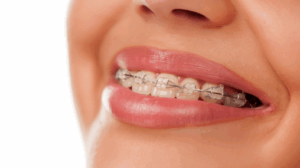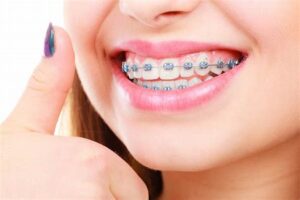3D-Printed Braces: How Customisation Is Changing Everything
Orthodontics has come a long way from bulky metal braces and long treatment timelines. What once required years of adjustments and a one-size-fits-all approach has evolved into something much more precise—and personal. Thanks to modern technology, patients now have access to more advanced and efficient solutions that not only straighten teeth but do so with greater comfort and accuracy.
One of the most exciting advancements in recent years is the rise of 3D-Printed Braces. These custom-designed brackets are created using digital scans and cutting-edge printing technology, offering a personalized fit for each individual tooth. It’s a major step forward in orthodontic care—one that focuses on speed, comfort, and aesthetics without compromising results. As more orthodontists embrace this innovation, it’s clear that the future of braces is being built one custom piece at a time.
What Are 3D-Printed Braces and How Do They Work?

3D-Printed Braces are a modern take on traditional orthodontic treatment. Unlike conventional metal brackets that come in standard shapes and sizes, these braces are custom-made for each tooth using advanced 3D printing technology. The process starts with a digital scan of your mouth, capturing the precise shape and position of every tooth. That scan is then used to design brackets that match your unique dental anatomy.
Once designed, the brackets are printed using strong, biocompatible materials—often in a clear or tooth-colored finish for a more discreet look. A custom tray is created to help bond all the brackets to your teeth at once, ensuring precise placement from the start. Companies like LightForce have led the way in this space, making it possible to offer more personalized treatment with fewer adjustments and greater efficiency throughout the process.
The Digital Scan: Replacing Messy Impressions
Traditional dental impressions were often uncomfortable, messy, and time-consuming. Patients had to bite down into trays filled with sticky material, hoping for an accurate mold of their teeth. Today, that experience has been completely transformed through digital scanning technology. Instead of physical molds, orthodontists now use small handheld scanners to capture highly detailed 3D images of your entire mouth in just minutes.
A qualified orthodontist in Mount Kisco will use digital scans to create a precise 3D model of your teeth. This model becomes the foundation for designing your treatment plan, including custom brackets if you’re receiving 3D-printed braces. The process is not only faster but also far more comfortable and hygienic. No mess, no gagging—just quick, accurate results that help ensure better-fitting appliances and a smoother start to your orthodontic journey.
Custom-Fit Brackets for Each Tooth
One of the biggest advantages of 3D-Printed Braces is the ability to create brackets that are individually designed for each tooth. Traditional braces rely on standard brackets that require manual adjustments throughout treatment. In contrast, 3D-printed brackets are engineered to match the exact contours and angles of your teeth right from the beginning.
This level of precision means each bracket fits securely and accurately, minimizing the chances of them coming loose or needing repositioning later. It also gives orthodontists greater control over how each tooth moves, allowing for more predictable and efficient results. Because everything is planned in advance using digital models, fewer mid-treatment tweaks are needed. The result is a more streamlined process that saves time and reduces the risk of complications—making the experience smoother for both patient and provider.
Treatment Time and Efficiency Gains
Traditional braces often require frequent adjustments and monitoring because the brackets aren’t customized for each patient. In contrast, 3D-printed braces are built around a fully digital, upfront treatment plan. Every bracket is designed with the end goal in mind, allowing teeth to move more efficiently from the very start of treatment.
This approach significantly reduces the need for mid-course corrections, meaning fewer in-office appointments and less time spent in the chair. By eliminating much of the guesswork involved in traditional methods, orthodontists can guide teeth into their ideal positions with greater accuracy and control.
Compared to traditional braces in Mount Kisco, this streamlined approach may reduce treatment time by up to 30%. Patients not only achieve their ideal smiles more quickly, but they also benefit from fewer disruptions to their daily routines. Faster progress, fewer visits, and a treatment process that’s designed around your exact needs make this option an increasingly popular choice.
Aesthetic Improvements Without Sacrificing Results
For many teens and adults, the appearance of braces is just as important as the results. Traditional metal brackets can feel bulky and overly noticeable, which often leads patients to delay or avoid treatment altogether. That’s where 3D-Printed Braces offer a major aesthetic advantage.
These modern brackets are made using tooth-colored, ceramic materials that blend in with your natural smile. Their low-profile design sits flatter against the teeth, making them less visible and more comfortable. Because each bracket is custom-designed, there’s no excess size or awkward fit—just a sleek, personalized appearance that’s hard to detect in everyday conversations.
This combination of subtle design and high performance makes them a great fit for anyone who wants effective treatment without drawing attention to it. You don’t have to sacrifice confidence for results. With today’s options, you can work toward a straighter smile without feeling self-conscious about how you look in the meantime.
Comfort Through Design
One of the most noticeable differences patients experience with modern orthodontics is improved comfort—and 3D-printed systems are no exception. Because the brackets are custom-designed to fit each tooth, they sit more naturally along the gumline and reduce irritation inside the cheeks and lips.
Smoother edges and lower profiles mean there’s less friction overall, especially during speaking and eating. In many cases, the precise bracket positioning also reduces the need for extra components like rubber bands or bulky appliances that can cause additional soreness.
From day one, patients often report feeling less pressure and fewer hot spots compared to traditional braces. That’s because the system is built to work efficiently from the beginning—without forcing unnecessary movements or relying on frequent adjustments. It’s all part of a treatment experience that feels as good as it looks.
Material Matters: Strength and Safety
3D-printed orthodontic brackets are made from high-strength, biocompatible materials—often advanced ceramic composites designed to withstand daily wear without compromising comfort or performance. These materials are not only durable but also safe for long-term use in the mouth.
Each bracket is produced in a controlled lab environment using FDA-approved processes and equipment. This ensures consistency, precision, and quality with every set. Unlike mass-manufactured metal brackets, these are customized and checked for fit before ever reaching the patient. The result is a safer, more reliable system that meets strict medical standards while offering the added benefit of a nearly invisible appearance.
Are 3D-Printed Braces Right for Everyone?

While 3D-printed braces offer a high level of customization and efficiency, they may not be ideal for every case. Patients with mild to moderate alignment issues, or those who prioritize aesthetics and comfort, often benefit the most from this type of treatment. The precision fit and discreet design make them especially appealing to adults and image-conscious teens.
However, more complex orthodontic cases—such as severe bite issues or significant jaw misalignments—might still require traditional braces or other specialized appliances.
For simpler cases, Invisalign in Mount Kisco might be an excellent alternative to bracket-based systems. These removable clear aligners also use digital planning and offer their own set of advantages. A consultation with an experienced orthodontist can help determine the best option based on your unique needs.
Myths and Misconceptions
A common misconception is that anyone with access to a 3D printer can create their own braces at home. This is not only false—it’s dangerous. Orthodontic treatment involves applying controlled force to teeth and bone, which must be carefully planned by a licensed specialist.
3D-Printed Braces are designed using precise digital scans and manufactured under strict medical standards. Attempting to replicate this at home can lead to serious complications, including permanent damage. Safe, effective results always require professional guidance and supervision.
How They Compare to Clear Aligners
Clear aligners and 3D-printed braces both offer discreet orthodontic solutions, but they work in very different ways. Aligners are removable trays that gently shift your teeth over time, giving patients the flexibility to eat and brush without restrictions. However, they require strict discipline—typically 20 to 22 hours of wear per day.
3D-printed braces, on the other hand, are fixed in place and don’t rely on patient compliance. Because each bracket is custom-designed and precisely positioned, they can offer more control for complex tooth movements and often require fewer adjustments.
What to Expect From Start to Finish
The process of getting 3D-Printed Braces begins with a digital scan of your teeth. That scan is used to design a personalized treatment plan and custom brackets for each tooth. Once the digital setup is approved, the brackets are 3D-printed and prepared for bonding.
An indirect bonding tray is created to ensure every bracket is placed precisely where it belongs—all in one appointment. After placement, you’ll have periodic checkups to monitor progress and make minor adjustments if needed. The entire experience is streamlined, efficient, and built around accuracy from the beginning.
Cost Considerations and Insurance
The cost of 3D-printed braces typically falls between $6,000 and $8,500, depending on the complexity of your case and the length of treatment. While this may be slightly higher than traditional braces, many patients find the added comfort, customization, and shorter treatment time to be well worth the investment.
In most cases, insurance plans that cover orthodontic treatment will also apply to 3D-printed options. Plus, with fewer adjustment appointments and a more efficient timeline, the overall experience can be more convenient—and potentially more cost-effective—in the long run.
The Big Picture: Why Orthodontists Are Embracing Custom Braces
Orthodontic practices are increasingly shifting toward personalized, tech-driven treatment options—and 3D-Printed Braces are leading that transformation. By combining digital planning with precise bracket fabrication, these systems allow orthodontists to deliver faster, more comfortable, and more predictable care.
The adoption of this technology reflects a broader trend in dentistry: using innovation to improve outcomes and patient experience. From reduced appointment times to more accurate tooth movement, custom braces represent a smarter, more modern approach to orthodontics—one that many providers are now making a core part of their practice.
Final Thoughts: Customisation Is the Future
The shift toward personalized orthodontic care is more than a trend—it’s a meaningful improvement in how treatment is planned and delivered. Customization brings real benefits to patients, from increased comfort and aesthetic appeal to shorter treatment timelines and fewer in-office adjustments. It reflects a growing focus on precision and efficiency that meets the expectations of today’s patients.
While not every case will require this level of customization, many will benefit from the added accuracy and comfort that modern systems can offer. As technology continues to evolve, orthodontic care is becoming more tailored, more effective, and more accessible than ever before.
Choosing a treatment that fits your lifestyle and goals has never been easier, and custom solutions like 3D-printed systems are helping make confident, healthy smiles a reality for more people every day.
Start Your Smile Transformation with Custom Braces
Want a straighter smile without the hassle of outdated methods? 3D-printed braces offer the precision, comfort, and speed today’s patients deserve. If you’re exploring modern orthodontic solutions that fit your lifestyle, now’s the time to take the next step.
Contact Smile Style NY to schedule your consultation and find out if custom 3D-printed braces are right for you. Your future smile starts here.

